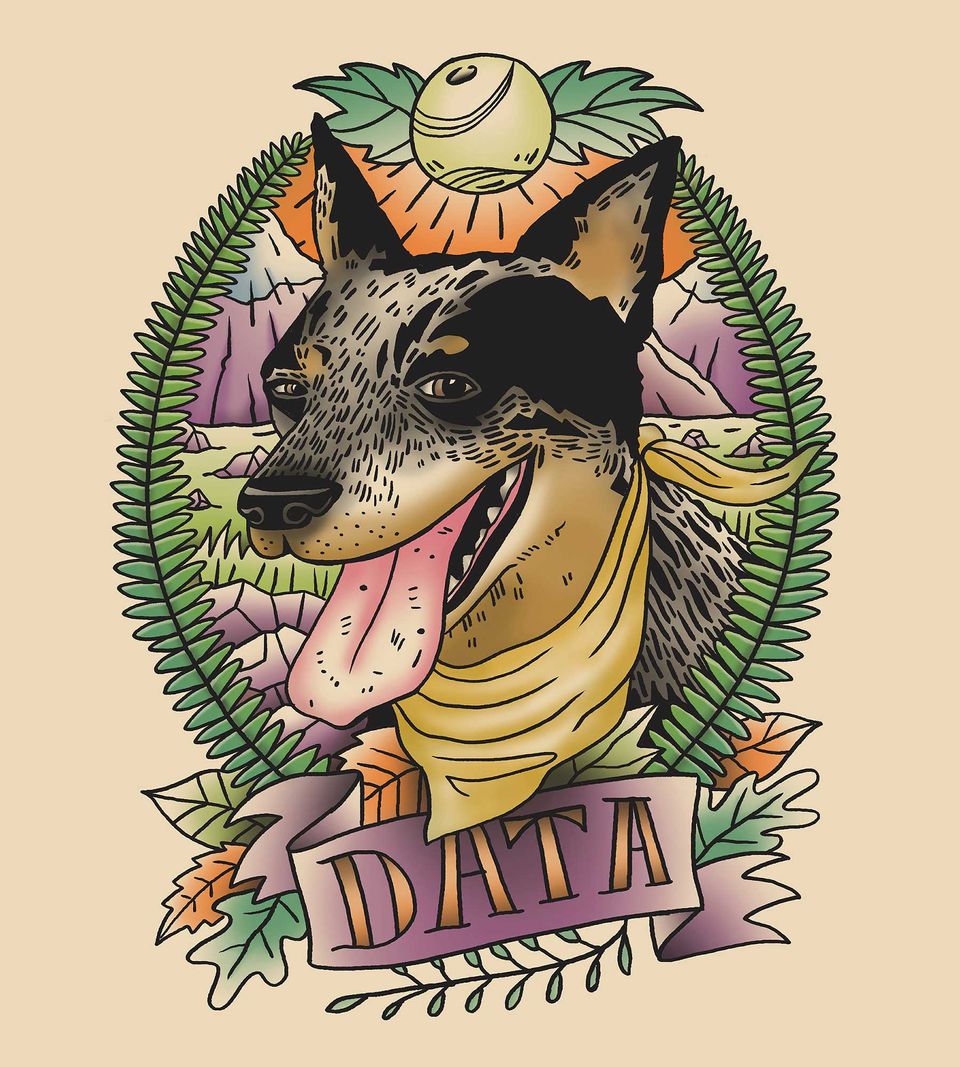Artist Spotlight: Burton Durand
February 26, 2020
Everyone’s work is deeply idiosyncratic: in our regular Spotlight segment we explore artists’ experiences and inspiration to understand what defines and inspires their unique styles.
Can you give us a brief background on yourself?
I distinctly remember that the start of my artistic path was when, in Elementary School, a friend showed me how to draw Sonic the Hedgehog during class. From then I branched out to Mario, GI Joe, Ninja Turtles and all the other characters kids in the 90s were obsessed with. Then I took that artistic passion and channeled it into Graphic Design in college. I earned a BFA degree in Visual Communication / Graphic Design at the University of Louisiana at Lafayette, but I went above and beyond by taking additional drawing and animation classes. Since graduation, I’ve worked in Lafayette as a designer and art director at a couple of nice ad agencies. I’ve been with BBR Creative for seven years now as Senior Art Director and do a lot of freelance illustration on the side. I’ve done illustration work for Time Out New York, Dirty Coast Press, Dollar Shave Club, Cane River Pecans and a slew of other clients, both near and far. I also did a silly webcomic for three years called Horse_eComics, which were strips based on the now-defunct Twitter
spambot Horse_eBook’s tweets.

Lafayette has a good crew of artists who collaborate and hang out often, sharing ideas and inspiration. I’ve been part of a local Drink & Draw group for over 12 years now. We meet every Wednesday to sketch and joke around. There’s always some fun illustration project that comes my way locally. While they may not always be big budget, they do allow for quite a bit of creativity.
What is your process like when combining traditional and digital methods?
These days my process for illustration is usually a sketch on paper (for more elaborate works) and then scanning and inking/coloring digitally. It’s good to think out the composition and elements before jumping onto the computer. Ideally, I have 90% of the piece figured out before scanning the art. Then I fire up the stylus. If the project is a quick one, however, I usually do a digital sketch and then work over that layer directly. I’ve gotten more and more used to working that way, as it does save the time of starting on paper and converting to digital.
Could you pick one piece of art that has made a lasting influence on you, and if so why?
I’m going to zag a little on this question and consider the one piece of art the entire Calvin and Hobbes comic collection. I’ve read and reread all of the comics since I was young and they’re just so amazingly creative, thoughtful and powerful. I always try to instill some clever elements or a bit of humor into all of my illustrations. I figure where I lack in technical ability maybe I can make up a little of that slack with a cool idea or creative solution.
What skills or techniques are you working to try and improve at the moment?
I’m comfortable adapting to several different art styles, but my goal is to keep expanding my arsenal of looks and techniques. As an art director I need to adapt to any number of clients and brands, different moods and palettes, so it’s good to be flexible. I plan to keep exploring different media, be it digital brushes or combinations of traditional and non-traditional art.
Can you give our readers a tip or trick you have come across that has made your work a lot easier?
Definitely explore digital brush packs. There are plenty online for free and for sale, and they’ll greatly expand your capabilities. My digital art game changed forever when I discovered Kyle Webster’s brush packs a few years ago. I’ve bought just about every set he’s put out since then!
How can people who are interested in discovering more of your work find it?
I’m always posting fun stuff on Instagram
and have made so many good friends through Twitter
over the years. My goal is to soon make www.burtondurand.com
an illustration portfolio site instead of just linking to my Tumblr page.
Scriba is a revolutionary digital stylus that is ergonomically designed to comfortably fit your hand and uses unique Squeeze-Motion technology. Order here.
Articles

In the period since COVID forced many of us back home and out of the office, remote work has become the new norm for many. The flexibility of working from home, especially for those with small children, is very compelling, but making a productive workspace is more than setting up a desk in the spare room. More people are seeking to create functional and comfortable workspaces in their homes, however, it can be difficult to strike the right balance between a professional office space and a cosy home environment. Here are some tips for designing a home workspace that meets both of these needs: Dedicate a specific area for work Designating a specific area for work is essential for separating work from leisure time. This could be a separate room or just a corner of a room. It is important to make sure that the workspace is free from distractions and clutter, as this will help you stay focused and productive. Choose the right furniture Ergonomic furniture is key to a comfortable and productive workspace. Invest in a comfortable chair, a desk that is the right height, and a good-quality mouse and keyboard. If you are prone to back pain, consider a standing desk. Add personal touches Just because your workspace should be functional, doesn’t mean it can’t be personal. Add photos, plants, and other personal items to make the space feel like your own. This will help create a sense of comfort and make you feel at home in your workspace. Good lighting Good lighting is essential for a comfortable workspace. If possible, place your desk near a window for natural light. If not, invest in a high-quality desk lamp to provide bright, even light. Keep it organised An organised workspace will help you stay productive and focused. Use desk organisers, filing cabinets, and other tools to keep your work area free from clutter. A clean and organised workspace will also help you start each day with a clear mind. Consider your work style Think about the type of work you do and how you like to work. If you prefer a minimalist workspace, opt for a simple desk and a few basic supplies. If you need space for multiple screens and other technology, make sure you have enough room to work comfortably. Take breaks It’s important to take breaks throughout the day to avoid burnout. Step away from your desk, go for a walk, or do some stretching exercises to clear your mind and recharge.











